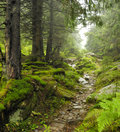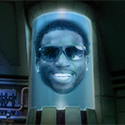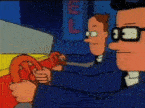|
Bobstar posted:Reminds me of driving in Belgium. 2-lane motorway - I'm going 120 (the speed limit) in the right lane, someone else is overtaking me at around 130 in the left lane (normal). Some guy finds this too slow, undertakes us both on the hard shoulder at 140+. Every story I have ever heard about Belgium/Brussels makes it seem like the most dysfunctional part of Western Europe.
|
|
|
|

|
| # ? May 28, 2024 14:26 |
|
Bobstar posted:Reminds me of driving in Belgium. 2-lane motorway - I'm going 120 (the speed limit) in the right lane, someone else is overtaking me at around 130 in the left lane (normal). Some guy finds this too slow, undertakes us both on the hard shoulder at 140+. This is hosed up
|
|
|
|
Bobstar posted:Reminds me of driving in Belgium. 2-lane motorway - I'm going 120 (the speed limit) in the right lane, someone else is overtaking me at around 130 in the left lane (normal). Some guy finds this too slow, undertakes us both on the hard shoulder at 140+. haha jesus. there's something that happens in the brains of drivers when the possibility of going fast turns into an entitlement to go fast. after spending almost a decade without a car, getting around pretty much solely by bike and public transit, I'm always pretty content just to be moving near the speed limit in a comfortable seat with climate control and music playing... but for people with a certain level of car brain it's deeply aggravating to not be moving significantly over the speed limit, no matter what environment you're in. deeply unhealthy.
|
|
|
|
Cup Runneth Over posted:That guy isn't going to get shot over his car one of my coworkers once pulled a gun on a black person for cutting them off, then posted on facebook about it with a bunch of racial slurs. HR told her to be more careful online.
|
|
|
|
Bobstar posted:Reminds me of driving in Belgium. 2-lane motorway - I'm going 120 (the speed limit) in the right lane, someone else is overtaking me at around 130 in the left lane (normal). Some guy finds this too slow, undertakes us both on the hard shoulder at 140+. lol every time there's a BMW or whatever eating poo poo while undertaking in r/idiotsincars the top posts are always criticizing the cammer for being in the left lane (even if they're actively passing) because they weren't passing fast enough
|
|
|
|
Kicked Throat posted:That reminds me of some posts about carjackings i saw on reddit: This helps feed into cars being status symbols. One mustn't be a poor slob walking to work, taking transit, or car pooling. A car—the bigger, louder, and more aggressive, the better—is a sign of success inherent to the owner's identity. Any effort to improve alternate modes of transportation or make streets safer is taken as a direct attack on not only the owner's property, but the way they conceive of themselves in society.
|
|
|
|
Cugel the Clever posted:Any effort to improve alternate modes of transportation or make streets safer is taken as a direct attack on not only the owner's property, but the way they conceive of themselves in society. I'd be lying if I said that wasn't a nice bonus
|
|
|
|
Electro-Boogie Jack posted:i was picking something up the other day and drove on a main street in a pretty dense part of the city. i'm going at or very slightly below the speed limit the entire time, and eventually the driver of a huge pickup truck behind me starts flashing his brights and then honking at me. a few blocks later he guns it through the parking lane to get ahead and then runs a red light right in front of me. the house I grew up in was right in front of a stop sign that was one short block away from a traffic light. Many times as a child I was almost run over by drivers speeding through the stop sign so that they could go wait at a red light fifty metres away.
|
|
|
|
Cugel the Clever posted:Car dependency is a huge factor in keeping the poor poor. Without decent public transit, walkable/bikeable cities, and affordable homes near centers of economic opportunity, many are effectively forced into the purchase of a car. Often, the car they can afford will prove to be many times more expensive than anticipated because of maintenance, gas, and storage, leaving them stuck choosing between feeding themselves or their auto. Despite paying hundreds more in rent, living closer to work w/o a car was able to keep me moving forward at a crucial point in my life. No major fluctuations in budget based on gas or repair. The budgeting of time that went with bus routes, in an especially unfriendly to public transit area, helped me learn a thing or two as well. Add in biking around, etc., I appreciate the life skills it helps one build. It sounds silly but I just think about the idiots in little cars who would come and buy a huge TV w no idea of how things actually fit in their car. Or people who rush around because they can leave at the last possible second but can’t possibly be late! It’s just an extension of “convenience” which is just shorthand at this point for waste by another name.
|
|
|
|
I wonder as society collapses, if we'll see something I call a "car riot". Imagine a tunnel, or a highway with no exits around, people are stuck. One rear end in a top hat honks for no reason, another starts honking in response, other people get involved because everyone is pissed off and bored anyway, or maybe as a laugh. Original guy gets buttmad and rams another car, that car rams him back, other cars get affected and start ramming too. People start to panic because there's no way out and people are using their 4 ton grocery grabbers as weapons and they have kids in the car, so they're trying to ram their way out too. People try to dismount and run away, but are hit by cars. A few people in the traffic jam have guns, because of course they do. Bullets only really get stopped by engine blocks. So now a demolition derby has broken out with also random gunfire. The panic builds and no authority can even respond because of the traffic. It's a total high-dea, but I can't put it past people. When I was watching Squid Game, the most terrifying scene was when they made them riot and start killing each other because they introduced a strategy where killing other participants on purpose was valid and used strobes in darkness to agitate them. I could see conditions like that occurring in a tunnel with a bunch of stuck drivers. Just getting madder and madder, more claustrophobic, more CO2 poisoned, until someone takes the lid off the violence jar.
|
|
|
|
|
every once in a while I'll have carbrain thoughts and have to correct them like when someone is jaywalking and have to hit my brakes and I'm like "what a loving moron" then I'm like "oh wait no, maybe I'M the loving moron oh wow i can't believe how much of a loving moron i am"
|
|
|
|
Dolphin posted:every once in a while I'll have carbrain thoughts and have to correct them  It's incredible how deliberately unwalkable much of our car-exclusive place planning has left us. Urban areas at least tend to throw a fig leaf at pedestrians with narrow sidewalks and marked crosswalks, but pedestrians being forced into a game of frogger is the norm across much of America where folks are either forced into a death-defying 30-second jaywalk across 8 lanes of traffic or into a half-hour-long, Odyssean journey to the nearest intersection where drivers will still only stop for you if they have a light and rage at you for having the temerity to slow their roll. Drivers are so car-brained that this is just normal. Unrelated, came across this bullshit on an anti-pedestrian article when searching for the above cartoon. There has been so much car-brained rage published in major publications about pedestrians on phones, decrying it as "dangerous", completely incapable of conceiving that maybe, just maybe it's the 5-tons of steel hurtling down a space for people that's the real problem.  And, again, if you're in the car with a driver who pulls out their phone and proceeds to gently caress around with it in any situation other than the car being in park, please throw that poo poo out the window (after offering to look up what they need, if you want to give them a chance first).
|
|
|
|
Cup Runneth Over posted:That guy isn't going to get shot over his car If I get carjacked the people will immediately stall out my car and then shoot me in frustration. It'll own. Hopefully I wont' have my kid in the backseat.
|
|
|
|
i remember seeing this picture like a decade ago and i know its so much older than that still relevant as ever
|
|
|
|
this is tremendous content https://twitter.com/9EndlessShrimp6/status/1360783516695465986
|
|
|
|
Electro-Boogie Jack posted:there's something that happens in the brains of drivers when the possibility of going fast turns into an entitlement to go fast this is a good quote. gonna remember this one thank you
|
|
|
|
Cugel the Clever posted:
i think the anger towards jaywalkers is that the driver is performing an extremely complex and extremely dangerous operation that demands very specific conditions to do safely and they sort of subconsciously realize this but don’t quite close the loop on ‘people shouldnt be doing this’ and instead (sort of rightly) see any change in condition as a dangerous affront
|
|
|
|
cool av posted:i think the anger towards jaywalkers is that the driver is performing an extremely complex and extremely dangerous operation that demands very specific conditions to do safely and they sort of subconsciously realize this but don’t quite close the loop on ‘people shouldnt be doing this’ and instead (sort of rightly) see any change in condition as a dangerous affront I think it's mostly because jaywalking is dangerous and they dont want to be the one who accidentally hits someone crossing in the middle of the street with their car. so yes basically that by the cartoon logic above, it's just straight up throwing yourself into the pit instead of using the rickety board to cross. it's dumb
|
|
|
|
https://www.youtube.com/watch?v=7qdqW1ERaXA This channel is a rich mine of carbrain people hydrolocking their cars because they cannot conceive of why they shouldn't go down a flooded road. That has a "road closed" sign. The best, of course, are Range Rovers and lifted Land Rovers. Zeppelin Insanity has issued a correction as of 09:44 on Dec 30, 2021 |
|
|
|
Cup Runneth Over posted:I think it's mostly because jaywalking is dangerous and they dont want to be the one who accidentally hits someone crossing in the middle of the street with their car. so yes basically that  it is the drivers who are culpable it is the drivers who are culpable
|
|
|
|
vyelkin posted:the house I grew up in was right in front of a stop sign that was one short block away from a traffic light. Many times as a child I was almost run over by drivers speeding through the stop sign so that they could go wait at a red light fifty metres away. John Gotti did nothing wrong
|
|
|
|
Lastgirl posted:this is tremendous content  Cup Runneth Over posted:I think it's mostly because jaywalking is dangerous and they dont want to be the one who accidentally hits someone crossing in the middle of the street with their car. so yes basically that The point of the cartoon is that it's utter madness that car-brained street planning effectively carves these huge canyons of certain death into places. There are two contexts in which people cross the street at places other than marked intersections:
For the latter, the poor in those places are hosed. Car dependency is irrevocably baked into the built landscape and any alternative is fundamentally inconceivable to the vast majority of residents. Making it slightly more possible to get by without a car is both extra expensive due to the sprawl and has effectively zero constituency beyond the already disadvantaged. As individuals, I don't know what we can do beyond fight to make neighborhoods in the first scenario more affordable to all  tl;dr: Jokerpilled Drudge posted:
|
|
|
|
Polo-Rican posted:this is a good quote. gonna remember this one thank you thanks brother cool av posted:i think the anger towards jaywalkers is that the driver is performing an extremely complex and extremely dangerous operation that demands very specific conditions to do safely and they sort of subconsciously realize this but don’t quite close the loop on ‘people shouldnt be doing this’ and instead (sort of rightly) see any change in condition as a dangerous affront yeah, i've thought about this phenomenon too when you see people saying bike lanes and pedestrian zones are dangerous and put people at risk because then people will bike and walk, and I think a lot of them are poking around the idea that cars are just too loving dangerous, and then they instinctively reject it because car brain thinks 'it's the presence of cyclists that's dangerous' instead of 'it's the presence of 5k lbs of metal moving fast enough to liquify someone that's dangerous'
|
|
|
|
Electro-Boogie Jack posted:thanks brother
|
|
|
|
SKULL.GIF posted:
SA-hosted my edit of this:  https://fi.somethingawful.com/safs/titles/1a/36/00111561.0014.png
|
|
|
|
Cugel the Clever posted:
 Lewis v. Amorous, 3 Ga. App. 50 (1907) posted:It is insisted in the argument that automobiles are to be classed with ferocious animals, and that the law relating to the duty of the owners of such animals is to be applied. It is not the ferocity of the automobile that is to be feared, but the ferocity of those who drive them. Until human agency interferes, they are usually harmless. Confessions of a Recovering Engineer, Charles Marohn Jr. posted:Since human error is inherent to the operation of an automobile, and since humans are not machines that can be fixed but complex organisms that respond to their environment in emergent and novel ways, there is no strategy to remove reckless behavior completely. In a society that accepts drinking and driving as normal, people will drink and drive.
|
|
|
|
an actual frog posted:SA-hosted my edit of this:  give every poster itt this gang tag right now. give paul_soccer12 two of them give every poster itt this gang tag right now. give paul_soccer12 two of them 
|
|
|
|

|
|
|
|
I love when cars ignore pedestrian signs and beep at me. I just bike/walk slower.
|
|
|
|
Once saw a driver in a truck absolutely rage out after nearly murdering a few teens on escooters. Driver tried to hang a hard right, paying zero attention to anyone in the bike lane, and was inches away from striking the first one dead on. Driver proceeded to lay on the horn and holler incoherently out their window.
|
|
|
|
Hubbert posted:
 I guess given how often Confessions of a Recovering Engineer is cited it's mandatory thread reading huh
|
|
|
|
This owns.
|
|
|
|
Sphyre posted:
|
|
|
|
Sphyre posted:
please and thank you
|
|
|
|
Sphyre posted:
|
|
|
|
Sphyre posted:

|
|
|
|
It's pouring rain, but tons of people still don't have their headlights on. Also getting assholes tearing out of residential streets and weaving around on arterial roads and tailgating people, because he has a base model luxury car and it's his world, you're just living in it.
|
|
|
|
Sphyre posted:
|
|
|
|
|
The mods make you pay for gang tags now stfu.
|
|
|
|

|
| # ? May 28, 2024 14:26 |
|
Sphyre posted:
lol on the one hand: I love this thread and I love this gangtag and I want to reward everyone itt for making such a wonderful thing on the other hand: the admins have told us not to just give gangtags to everybody who asks, which means if I go overboard they might decline them and then nobody gets one as a compromise, I will queue this gangtag for the first ten posters who quote this post AND post their favourite bit of car-hating content it can be whatever you want, a meme, a joke, a quotation, a picture, but please post something good so that the thread gets an avalanche of good content in exchange for the gangtags! if you aren't part of the speedy ten I'm afraid this means you might have to spend the $5 to get the tag on your own
|
|
|
































